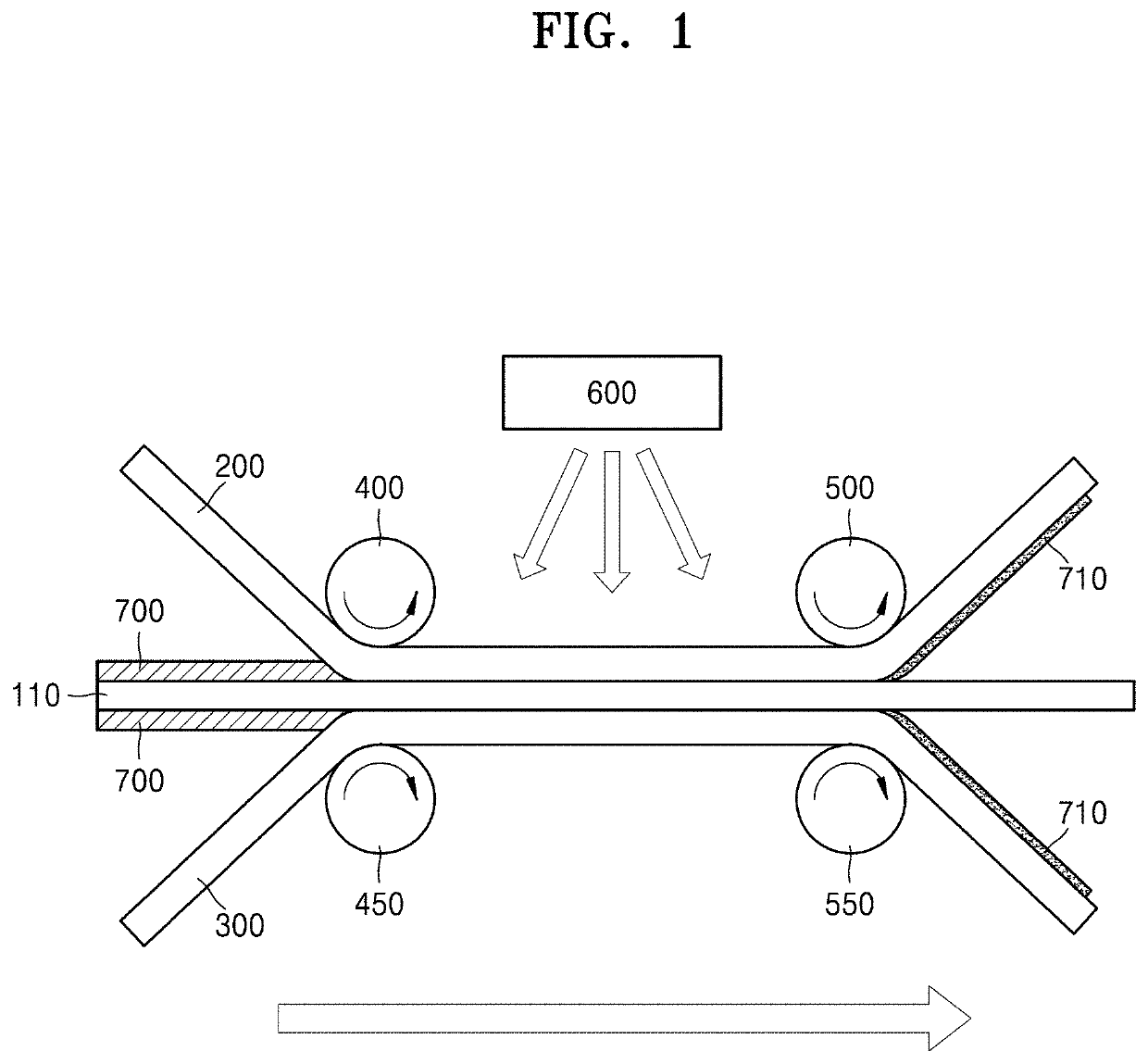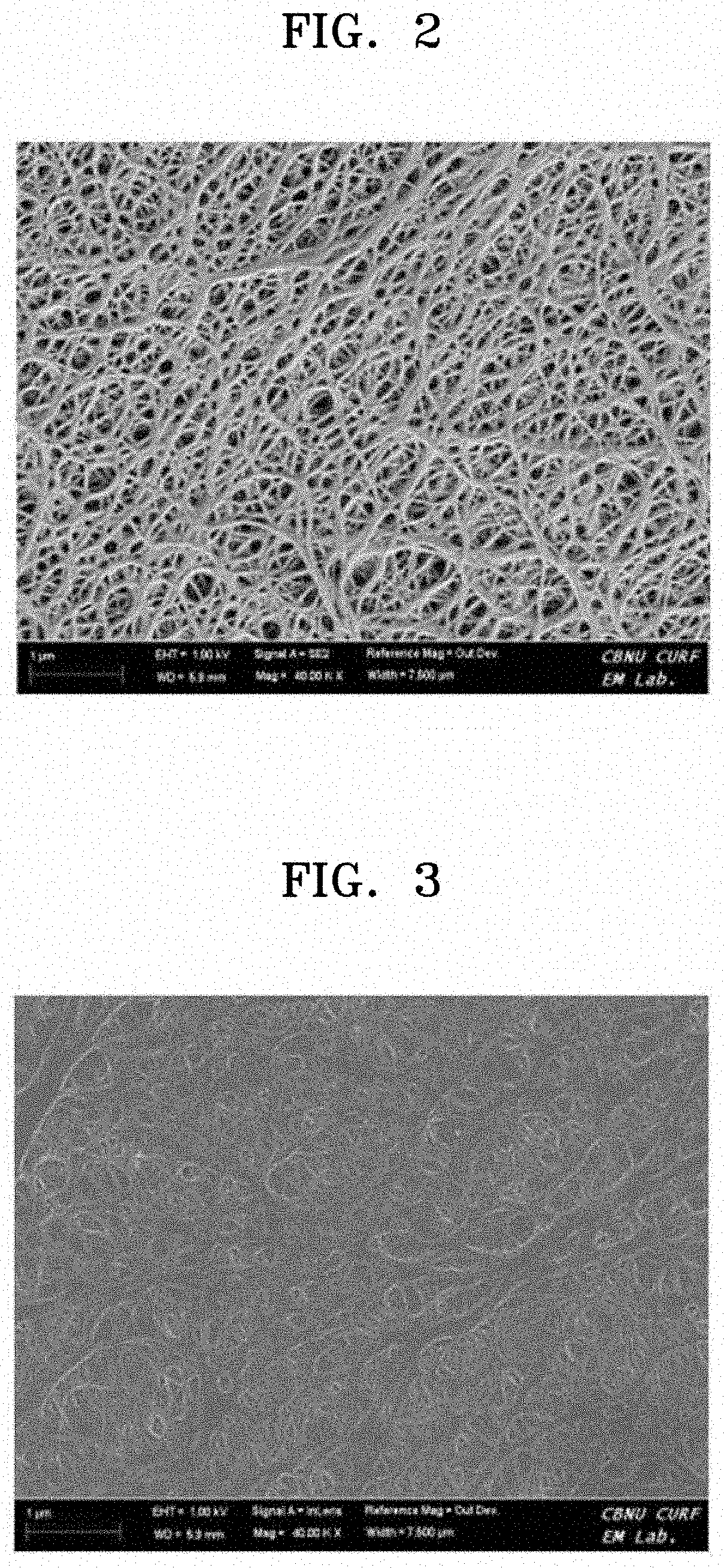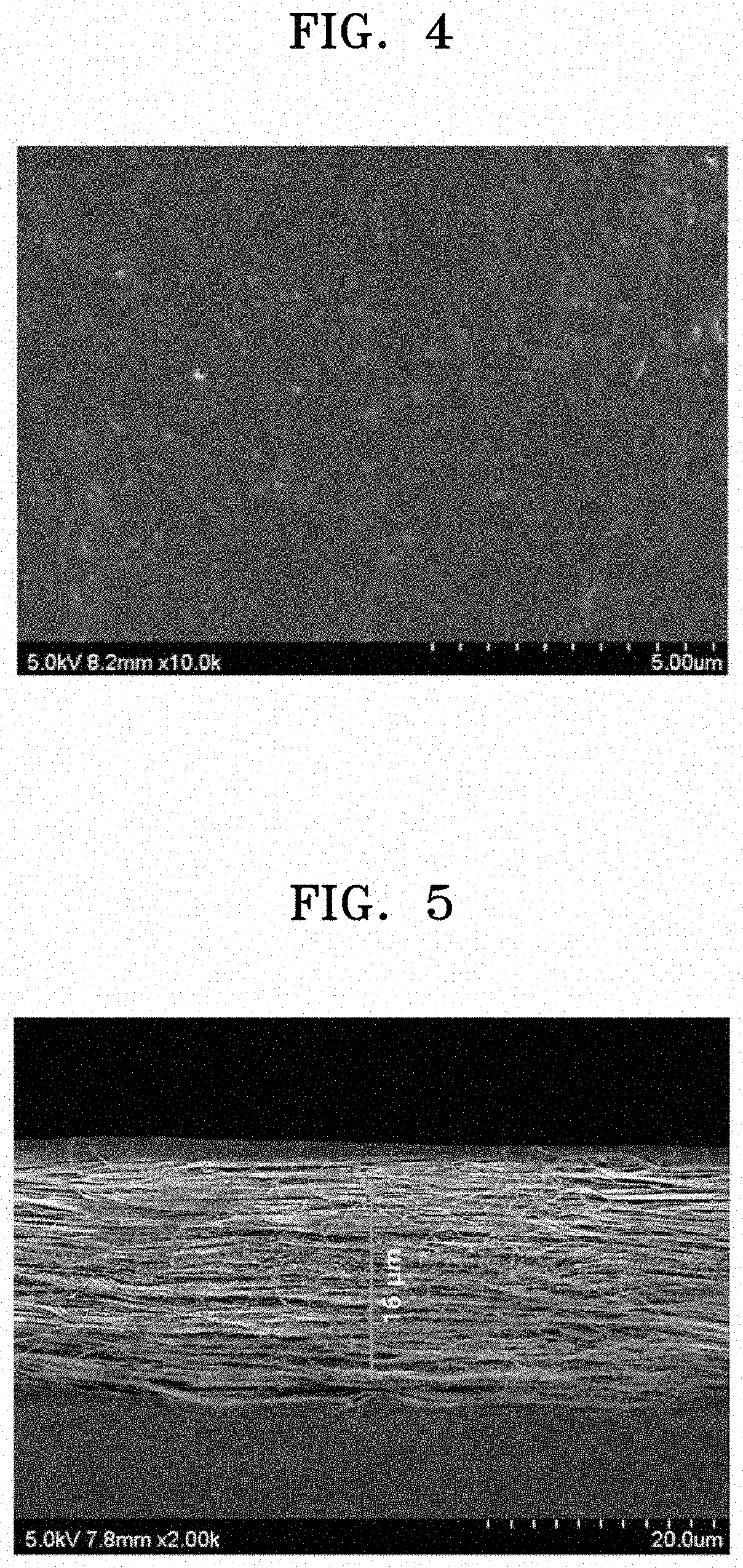Pore-filled ion exchange polyelectrolyte composite membrane from which surface ion exchange polyelectrolyte has been removed and method for manufacturing same
- Summary
- Abstract
- Description
- Claims
- Application Information
AI Technical Summary
Benefits of technology
Problems solved by technology
Method used
Image
Examples
preparation example 1
Exchange Polyelectrolyte Composite Membrane
[0105]To prepare an anion exchange polyelectrolyte composite membrane, (3-acrylamidopropyl)trimethylammonium chloride, 1,4-bis(acryloyl)piperazine, and deionized water were mixed and stirred at the weight ratio of 12:1:10, and 2-hydroxy-2-methyl-1-phenylpropane-1-one diluted at the concentration of 10 wt % in methanol, which was used as a photoinitiator, was mixed therewith in the amount of 0.1 parts by weight to 0.5 parts by weight based on 100 parts by weight of the resultant mixed solution.
[0106]Then, a polyolefin porous polymer support, which was prepared by immersion in a solution, in which 0.5 parts by weight to 1 part by weight of commercially available surfactant (dodecylbenzenesulfonic acid (DBSA)) was diluted in water, for one minute to two minutes, and then dried to hydrophilize the surface of pores thereof. The polyolefin porous polymer support had the thickness of 16 μm, the average pore size of 0.07 μm, and the pore volume of ...
preparation example 2
Exchange Polyelectrolyte Composite Membrane
[0110]The cation exchange polyelectrolyte composite membrane was prepared using the same method as the anion exchange polyelectrolyte composite membrane of Preparation Example 1, except that the following method was performed to prepare the cation exchange precursor solution.
[0111]Sodium 2-acrylamido-2-methylpropane sulfonate, 1,4-bis(acryloyl)piperazine, and deionized water were mixed and stirred at the weight ratio of 6:1:6, and 2-hydroxy-2-methyl-1-phenylpropane-1-one diluted at the concentration of 10 wt % in methanol, which was used as a photoinitiator, was mixed therewith in the amount of 0.1 parts by weight to 0.5 parts by weight based on 100 parts by weight of the resultant mixed solution, thereby completing the preparation of a cation exchange precursor solution.
[0112]Thereafter, a cation exchange polyelectrolyte composite membrane was prepared by performing the same method as the anion exchange polyelectrolyte composite membrane o...
PUM
| Property | Measurement | Unit |
|---|---|---|
| Temperature | aaaaa | aaaaa |
| Fraction | aaaaa | aaaaa |
| Fraction | aaaaa | aaaaa |
Abstract
Description
Claims
Application Information
 Login to View More
Login to View More - R&D
- Intellectual Property
- Life Sciences
- Materials
- Tech Scout
- Unparalleled Data Quality
- Higher Quality Content
- 60% Fewer Hallucinations
Browse by: Latest US Patents, China's latest patents, Technical Efficacy Thesaurus, Application Domain, Technology Topic, Popular Technical Reports.
© 2025 PatSnap. All rights reserved.Legal|Privacy policy|Modern Slavery Act Transparency Statement|Sitemap|About US| Contact US: help@patsnap.com



